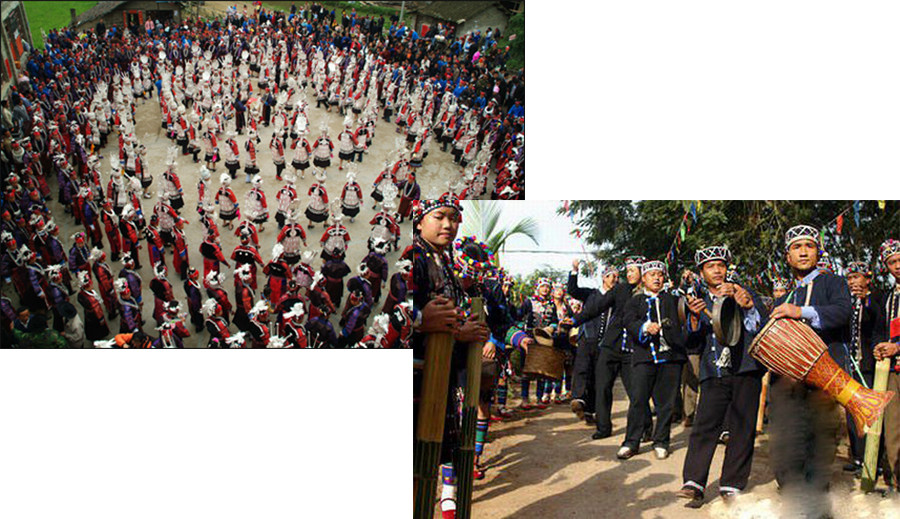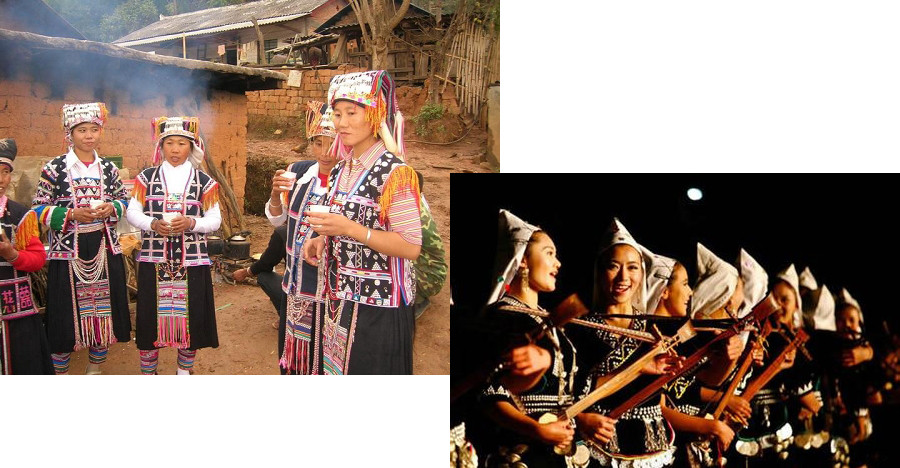 alt="Puer Surrounding Counties and Towns: Weekly & Special Local Markets Travel Guide"
/>
alt="Puer Surrounding Counties and Towns: Weekly & Special Local Markets Travel Guide"
/>
Miaoaina Festival of Hani Ethnic Minority
Overview of the Festival
- Chinese Name: 哈尼族苗爱拿节
- English Name: Miaoaina Festival of Hani Ethnic Minority
The Miaoaina Festival (also known as the Miao Festival) is one of the most important traditional celebrations of the Hani ethnic minority, primarily residing in the Yunnan Province of China. This festival is deeply rooted in the cultural heritage of the Hani people and is celebrated with enthusiasm, showcasing their customs, traditions, and spirituality. Here’s an introduction to the Miaoaina Festival:
Cultural Significance
The Miaoaina Festival is primarily a harvest festival, marking the end of the agricultural season. It is a time for the Hani people to express gratitude for the bountiful harvest, celebrate their cultural identity, and strengthen community bonds. The festival also serves as an occasion for various traditional activities, including rituals and performances that reflect the Hani’s beliefs and customs.

Timing of the Festival
The Miaoaina Festival is generally held in the lunar month of August, coinciding with the harvest season of crops such as rice and corn. The specific dates can vary each year based on the lunar calendar.
Main Activities and Customs
- Preparation and Offerings: Before the festival, families prepare various traditional foods, including rice dumplings, meat, and vegetables. Offerings are made to ancestors and deities, expressing thanks and seeking blessings for future prosperity.
- Ritual Ceremonies: The festival begins with ceremonial activities led by village elders and spiritual leaders. These may include prayers, sacrifices, and other rites to honor ancestors and agricultural deities.

- Traditional Clothing and Adornments: Participants often dress in colorful traditional attire, adorned with intricate embroidery and silver jewelry. This clothing showcases the unique artistry and cultural heritage of the Hani people.
- Dancing and Singing: The Miaoaina Festival features vibrant performances, including traditional dances and songs. Participants may join in group dances, often accompanied by drums and other musical instruments, celebrating their cultural legacy and community spirit.
- Games and Competitions: Various competitions and games, such as traditional sports, are organized to promote camaraderie and community interaction. These activities are often filled with laughter and friendly rivalry.
- Feasting: A highlight of the festival is the communal feasts, where families and friends gather to enjoy traditional Hani dishes. The sharing of food symbolizes unity and community ties.
- Cultural Exhibitions: The festival may include showcases of traditional crafts, including weaving and pottery, allowing local artisans to demonstrate their skills and preserve their cultural heritage.

 7 Days GolfingTour
7 Days GolfingTour
 8 Days Group Tour
8 Days Group Tour
 8 Days Yunnan Tour
8 Days Yunnan Tour
 7 Days Shangri La Hiking
7 Days Shangri La Hiking
 11 Days Yunnan Tour
11 Days Yunnan Tour
 6 Days Yuanyang Terraces
6 Days Yuanyang Terraces
 11 Days Yunnan Tour
11 Days Yunnan Tour
 8 Days South Yunnan
8 Days South Yunnan
 7 Days Tea Tour
7 Days Tea Tour
 8 Days Muslim Tour
8 Days Muslim Tour
 12 Days Self-Driving
12 Days Self-Driving
 4 Days Haba Climbing
4 Days Haba Climbing
 Tiger Leaping Gorge
Tiger Leaping Gorge
 Stone Forest
Stone Forest
 Yunnan-Tibet
Yunnan-Tibet
 Hani Rice Terraces
Hani Rice Terraces
 Kunming
Kunming
 Lijiang
Lijiang
 Shangri-la
Shangri-la
 Dali
Dali
 XishuangBanna
XishuangBanna
 Honghe
Honghe
 Kunming
Kunming
 Lijiang
Lijiang
 Shangri-la
Shangri-la
 Yuanyang Rice Terraces
Yuanyang Rice Terraces
 Nujiang
Nujiang
 XishuangBanna
XishuangBanna
 Spring City Golf
Spring City Golf
 Snow Mountain Golf
Snow Mountain Golf
 Stone Mountain Golf
Stone Mountain Golf












 What Our Customers Say?
What Our Customers Say?
